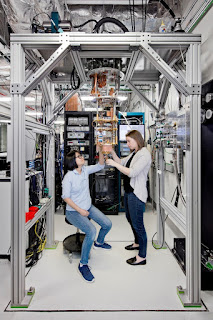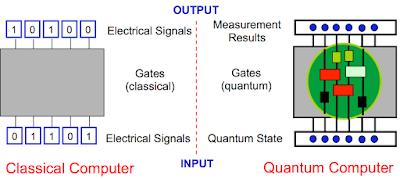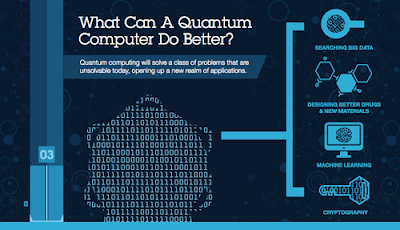Twitter Feed
Operation Golden Phoenix
This week, Dataline is participating in Operation Golden Phoenix. Operation Golden Phoenix is a four-day multi-agency collaborative training event designed to assist federal, state and local agencies with large and…
DISA Reaches out to Industry on Cloud Computing
In an interview with Computerworld , published in the New York Times, John Garing expanded on his goals for the DISA cloud computing initiative. Garing said that, “… he and…
Cloud Computing is $160B Market
According to the Financial Post, a Merrill Lynch Note estimates that cloud computing could be a $160B market by 2011. The companies that they see in the marketplace are shown…
SOA-R Educational Series: What is Cloud Computing
On July 16th, SOA-R held it’s first of six educational sessions on cloud computing for national security missions. Presenters during this first event were: Steven L Armentrout, PhDPresident & CEOParabon…
Gartner: Cloud Computing Fraught with Security Risks
Cloud computing is fraught with security risks, according to analyst firm Gartner. Smart customers will ask tough questions, and consider getting a security assessment from a neutral third party before…
The Definition of “Net-centric”
Last week, the Google Cloud Computing Group debated the definition of net-centric. The key thought was that net-centric was nothing more than internet-centric or basically “online” and therefore it really…
Cloud Computing Journal Launched
“The world’s first journal devoted to the delivery of massively scalable IT resources as a service using Internet technologies has been launched by SYS-CON Media. The all-new “Cloud Computing Journal”…
SOA-R First Session Presentations Announced
The presentations for the first session of the SOA-R Educational Series sesion have just been announced: Steven L Armentrout, PhDPresident & CEOParabon Grids, Clouds and Computation: Getting to Ground Truth…
Cloud Storage as a Service
In SAN vs cloud storage – a gray or silver lining? , Joseph Hunkins review last December’s observations of cloud storage by Chris Mellor of Techworld: “Google does not use…
Google: Model for the Systems Architecture of the Future
In December of 2005, Prof. Paul A. Strassmann of George Mason University, provided an excellent outline for cloud computing success in a netcentric environment: Network-Centric Requirements (2010)• Downtime ( 1…
- The release of a new API (Application Program Interface) for the IBM Quantum Experience that enables developers and programmers to begin building interfaces between its existing five quantum bit (qubit) cloud-based quantum computer and classical computers, without needing a deep background in quantum physics.
- The release of an upgraded simulator on the IBM Quantum Experience that can model circuits with up to 20 qubits. In the first half of 2017, IBM plans to release a full SDK (Software Development Kit) on the IBM Quantum Experience for users to build simple quantum applications and software programs.
The IBM Quantum Experience enables anyone to connect to IBM’s quantum processor via the IBM Cloud, to run algorithms and experiments, work with the individual quantum bits, and explore tutorials and simulations around what might be possible with quantum computing. Since its launch less than a year ago, about 40,000 users have run over 275,000 experiments on the IBM Quantum Experience. It has become an enablement tool for scientists in over 100 countries and, to date, 15 third-party research papers have been posted to arXiv with five published in leading journals based on experiments run on the Quantum Experience.
 The broad availability of quantum computing capability could prove to be a significant blow to current data encryption practices. In 2015 the US National Security Agency actually advised US agencies and businesses to prepare for a time when the cryptography protecting virtually all e-mail, medical and financial records, and online transactions would be rendered obsolete by quantum computing. The US National Institute for Standards and Technology (NIST) is also running a competition to spur work on post-quantum algorithms.
The broad availability of quantum computing capability could prove to be a significant blow to current data encryption practices. In 2015 the US National Security Agency actually advised US agencies and businesses to prepare for a time when the cryptography protecting virtually all e-mail, medical and financial records, and online transactions would be rendered obsolete by quantum computing. The US National Institute for Standards and Technology (NIST) is also running a competition to spur work on post-quantum algorithms. - Drug and Materials Discovery: Untangling the complexity of molecular and chemical interactions leading to the discovery of new medicines and materials;
- Supply Chain & Logistics: Finding the optimal path across global systems of systems for ultra-efficient logistics and supply chains, such as optimizing fleet operations for deliveries during the holiday season;
- Financial Services: Finding new ways to model financial data and isolating key global risk factors to make better investments;
- Artificial Intelligence: Making facets of artificial intelligence such as machine learning much more powerful when data sets can be too big such as searching images or video; or
- Cloud Security: Making cloud computing more secure by using the laws of quantum physics to enhance private data safety.
This content is being syndicated through multiple channels. The opinions expressed are solely those of the author and do not represent the views of GovCloud Network, GovCloud Network Partners or any other corporation or organization.
( Thank you. If you enjoyed this article, get free updates by email or RSS – © Copyright Kevin L. Jackson 2017)
Cloud Computing
- CPUcoin Expands CPU/GPU Power Sharing with Cudo Ventures Enterprise Network Partnership
- CPUcoin Expands CPU/GPU Power Sharing with Cudo Ventures Enterprise Network Partnership
- Route1 Announces Q2 2019 Financial Results
- CPUcoin Expands CPU/GPU Power Sharing with Cudo Ventures Enterprise Network Partnership
- ChannelAdvisor to Present at the D.A. Davidson 18th Annual Technology Conference
Cybersecurity
- Route1 Announces Q2 2019 Financial Results
- FIRST US BANCSHARES, INC. DECLARES CASH DIVIDEND
- Business Continuity Management Planning Solution Market is Expected to Grow ~ US$ 1.6 Bn by the end of 2029 - PMR
- Atos delivers Quantum-Learning-as-a-Service to Xofia to enable artificial intelligence solutions
- New Ares IoT Botnet discovered on Android OS based Set-Top Boxes




